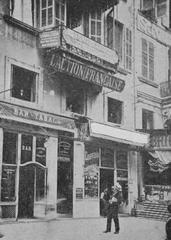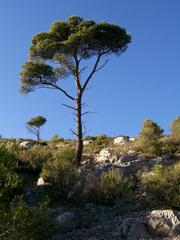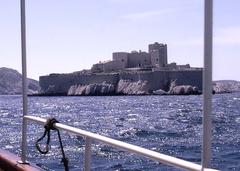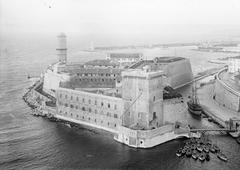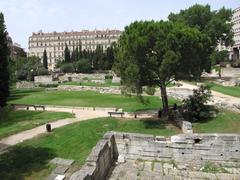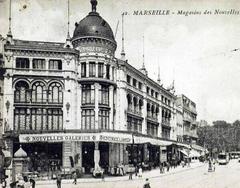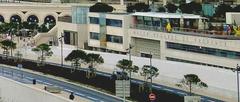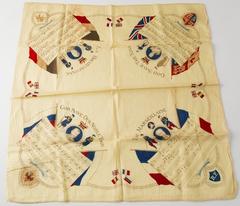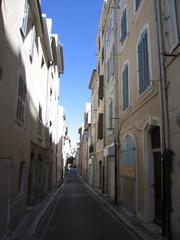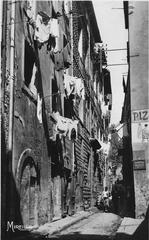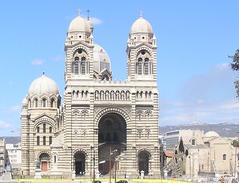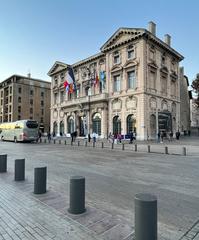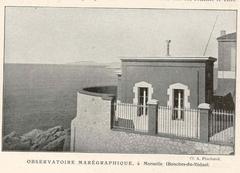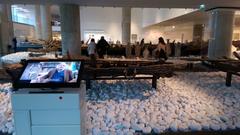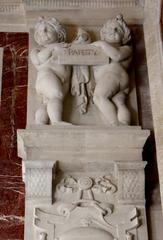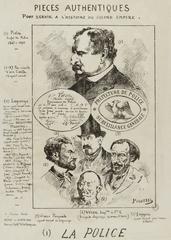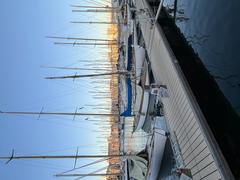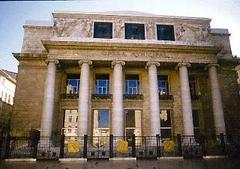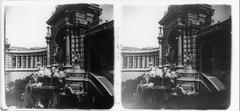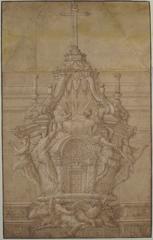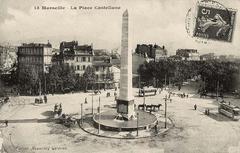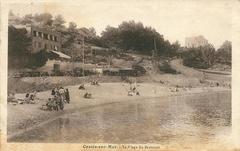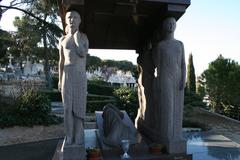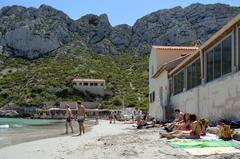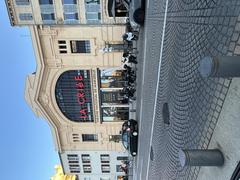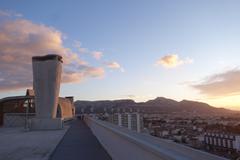Les Chartreux Marseille: Visiting Hours, Tickets, and Historical Sites Guide
Date: 04/07/2025
Introduction to Les Chartreux Marseille: A Historical and Cultural Overview
Les Chartreux, located in Marseille’s 4th arrondissement, is a district that beautifully fuses centuries of religious heritage with vibrant local life. Its origins date back to the 17th century, when Carthusian monks established a monastery that would give the neighborhood its name. Today, Les Chartreux is celebrated for its iconic landmarks—chief among them the Église des Chartreux (Church of the Carthusians)—as well as its lively streets, community events, and authentic village atmosphere. This guide offers comprehensive information for visitors, including opening hours, ticket policies, transportation, accessibility, and highlights of this remarkable Marseille neighborhood (Marseille Tourisme).
Table of Contents
- Historical Background
- Architectural and Artistic Heritage
- The Église des Chartreux: Visitor Guide
- The Les Chartreux District: Culture and Community
- Nearby Attractions
- Practical Visitor Information
- Frequently Asked Questions (FAQ)
- Conclusion and Visitor Tips
- References
Historical Background
Origins and Foundation
The story of Les Chartreux begins with the arrival of the Carthusian Order in Marseille. Known for their contemplative lifestyle, the Carthusians established their monastery in 1633 in what was then a rural setting along the Jarret brook. The foundation was laid by Marshal de Vitry, Governor of Provence, with support from Marseille’s nobility.
Construction and Architectural Development
Construction of the church, Sainte Marie-Madeleine des Chartreux, began in 1680 and was completed in 1702. Notably, the original monastery complex spanned nearly 11 hectares and included two cloisters, reflecting the Carthusians’ prominence in the city (Marseille Tourisme).
The Carthusian Order and Monastic Life
The Carthusian monks observed strict silence and lived a life of prayer and self-sufficiency. Their legacy remains visible in the district’s architecture and traditions.
The French Revolution and Its Impact
The Revolution in 1790 led to the suppression of monastic orders. The Carthusian community was dissolved and the monastery’s properties were seized and sold, ending a significant chapter in Marseille’s religious history.
19th Century Revival and Urban Development
As Marseille expanded, Les Chartreux was gradually integrated into the urban landscape. The church underwent modifications to accommodate a growing congregation, and Michel Serre’s “Apotheosis of Saint Mary Magdalene,” the only artwork to survive the Revolution, was installed in 1883 (Marseille Tourisme).
Architectural and Artistic Heritage
The Église des Chartreux is a classic example of 17th-century religious architecture. Its austere façade is complemented by a grand peristyle supported by eight columns, impressive stained glass windows (restored after 1952), and a monumental organ. The interior houses original altarpieces and chapels reflecting the Carthusian dedication to contemplation and simplicity. The church is both a historical monument and a living place of worship (Marseille Tourisme).
The Église des Chartreux: Visitor Guide
Visiting Hours and Admission
- Monday to Saturday: 9:00 AM – 6:00 PM
- Sunday: 9:00 AM – 12:30 PM and 4:00 PM – 6:00 PM
(Hours may vary during holidays and special events. Please consult the official parish website for updates.)
Admission: Free; donations are welcome to support restoration and community initiatives.
Accessibility
The church is wheelchair accessible with ramps at the main entrance. Assistance is available for visitors with reduced mobility.
Getting There
- Metro: Line 1, Chartreux station
- Tram: Line T2, Chartreux stop
- By Car: Access via Avenue Alexandre Flemming and the A7 motorway. Parking is limited; public transport is recommended (Marseille Tourisme).
Guided Tours and Events
Guided tours are available by appointment, often on weekends. The church hosts regular masses, concerts, and the renowned Christmas nativity scene with historic automaton santons (Paroisse des Chartreux).
Photography Tips
- Best times for photography: early morning or late afternoon for natural light and fewer visitors.
- Interior highlights: stained glass windows, Michel Serre’s painting, monumental organ.
- Exterior: the grand peristyle and columned façade.
The Les Chartreux District: Culture and Community
Urban Character
Despite urbanization, Les Chartreux maintains a village-like charm with narrow streets, lively markets, and a strong sense of community. The district’s population is diverse, attracted by its proximity to the city center and more affordable housing (fr.wikipedia.org, cartedemarseille.com).
Community Life and Venues
Community centers organize cultural and recreational events for all ages, while the Dôme de Marseille—a major concert and event venue—hosts international artists and large-scale gatherings (marseille-tourisme.com).
Local Markets and Dining
Daily life is enriched by traditional bakeries, local markets with Provençal produce, artisan shops, and a variety of cafés and restaurants. Notable is Riz d’Or, a well-known Vietnamese restaurant (Archik).
Nearby Attractions
- Cimetière des Chartreux: One of Marseille’s largest cemeteries, adjacent to the church, featuring graves of notable figures and evocative funerary art.
- Parc du 26e Centenaire: A large urban park with themed gardens and water features, ideal for a relaxing stroll (Marseille Tourism).
- Palais Longchamp: A 19th-century architectural masterpiece housing museums and surrounded by lush gardens (France Rent).
- Vieux-Port and Le Panier: Easily accessible via metro, offering historic sites, lively markets, and Marseille’s vibrant culinary scene (The Crazy Tourist).
Practical Visitor Information
Transportation and Accessibility
- Metro/Tram: Line 1 (Chartreux), Tram T2
- Bus: Several lines connect Les Chartreux to neighboring districts.
- Bike: Self-service electric bikes are available.
- Car: Limited street parking; consider park-and-ride options (RTM).
Safety and Etiquette
Les Chartreux is safe and welcoming. Standard city precautions apply, especially after dark. Modest dress and respectful behavior are expected in religious sites.
Seasonal Highlights
Spring and autumn are ideal for visiting due to pleasant weather. Seasonal markets and religious festivals provide unique cultural experiences (Lonely Planet).
Essential Contacts
- Tourist Office: 11 La Canebière, open daily 9 AM–6 PM
- Emergency Services: Dial 112
Frequently Asked Questions (FAQ)
Q: Is there an entrance fee for the Église des Chartreux?
A: No, admission is free; donations are appreciated.
Q: Are guided tours available?
A: Yes, by appointment, often on weekends.
Q: Is Les Chartreux accessible for visitors with disabilities?
A: Most areas are accessible, though some old streets may pose challenges.
Q: What are the best times to visit?
A: Early mornings and weekdays for fewer crowds; spring and autumn for optimal weather.
Q: How do I reach Les Chartreux from central Marseille?
A: Use Metro Line 1 (Chartreux station) or connecting bus lines.
Q: Where can I find more visitor information?
A: Consult the official Marseille tourism website or local event listings.
Conclusion and Visitor Tips
Les Chartreux stands as a testament to Marseille’s layered history, offering visitors a peaceful escape into a district where monastic heritage, architectural beauty, and vibrant contemporary life intersect. With free admission to key sites, excellent public transport links, and a welcoming atmosphere, Les Chartreux is an essential stop for anyone exploring Marseille’s cultural and historical landscape. For the latest updates, download the Audiala app and follow local tourism platforms.
References
- Les Chartreux Church Marseille: Visiting Hours, Tickets & Historical Guide (Marseille Tourisme)
- Visiting Les Chartreux, Marseille: History, Attractions, and Practical Visitor Information (Marseille Tourisme)
- Les Chartreux Marseille: Visiting Hours, Tickets, and Top Historical Sites to Explore (Marseille Tourism)
- Practical Visitor Information (Marseille Tourisme)
- Best Things to Do in Marseille (The Crazy Tourist)
- Official Parish Website (Paroisse des Chartreux)
